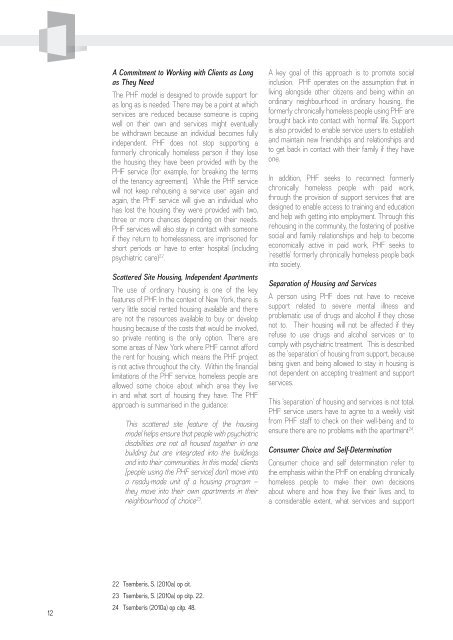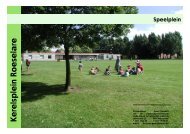Housing First - Provincie West-Vlaanderen
Housing First - Provincie West-Vlaanderen
Housing First - Provincie West-Vlaanderen
Create successful ePaper yourself
Turn your PDF publications into a flip-book with our unique Google optimized e-Paper software.
A Commitment to Working with Clients as Longas They NeedThe PHF model is designed to provide support foras long as is needed. There may be a point at whichservices are reduced because someone is copingwell on their own and services might eventuallybe withdrawn because an individual becomes fullyindependent. PHF does not stop supporting aformerly chronically homeless person if they losethe housing they have been provided with by thePHF service (for example, for breaking the termsof the tenancy agreement). While the PHF servicewill not keep rehousing a service user again andagain, the PHF service will give an individual whohas lost the housing they were provided with two,three or more chances depending on their needs.PHF services will also stay in contact with someoneif they return to homelessness, are imprisoned forshort periods or have to enter hospital (includingpsychiatric care) 22 .Scattered Site <strong>Housing</strong>, Independent ApartmentsThe use of ordinary housing is one of the keyfeatures of PHF. In the context of New York, there isvery little social rented housing available and thereare not the resources available to buy or develophousing because of the costs that would be involved,so private renting is the only option. There aresome areas of New York where PHF cannot affordthe rent for housing, which means the PHF projectis not active throughout the city. Within the financiallimitations of the PHF service, homeless people areallowed some choice about which area they livein and what sort of housing they have. The PHFapproach is summarised in the guidance:This scattered site feature of the housingmodel helps ensure that people with psychiatricdisabilities are not all housed together in onebuilding but are integrated into the buildingsand into their communities. In this model, clients[people using the PHF service] don’t move intoa ready-made unit of a housing program –they move into their own apartments in theirneighbourhood of choice 23 .A key goal of this approach is to promote socialinclusion. PHF operates on the assumption that inliving alongside other citizens and being within anordinary neighbourhood in ordinary housing, theformerly chronically homeless people using PHF arebrought back into contact with ‘normal’ life. Supportis also provided to enable service users to establishand maintain new friendships and relationships andto get back in contact with their family if they haveone.In addition, PHF seeks to reconnect formerlychronically homeless people with paid work,through the provision of support services that aredesigned to enable access to training and educationand help with getting into employment. Through thisrehousing in the community, the fostering of positivesocial and family relationships and help to becomeeconomically active in paid work, PHF seeks to‘resettle’ formerly chronically homeless people backinto society.Separation of <strong>Housing</strong> and ServicesA person using PHF does not have to receivesupport related to severe mental illness andproblematic use of drugs and alcohol if they chosenot to. Their housing will not be affected if theyrefuse to use drugs and alcohol services or tocomply with psychiatric treatment. This is describedas the ‘separation’ of housing from support, becausebeing given and being allowed to stay in housing isnot dependent on accepting treatment and supportservices.This ‘separation’ of housing and services is not total.PHF service users have to agree to a weekly visitfrom PHF staff to check on their well-being and toensure there are no problems with the apartment 24 .Consumer Choice and Self-DeterminationConsumer choice and self determination refer tothe emphasis within the PHF on enabling chronicallyhomeless people to make their own decisionsabout where and how they live their lives and, toa considerable extent, what services and support1222 Tsemberis, S. (2010a) op cit.23 Tsemberis, S. (2010a) op citp. 22.24 Tsemberis (2010a) op citp. 48.
















